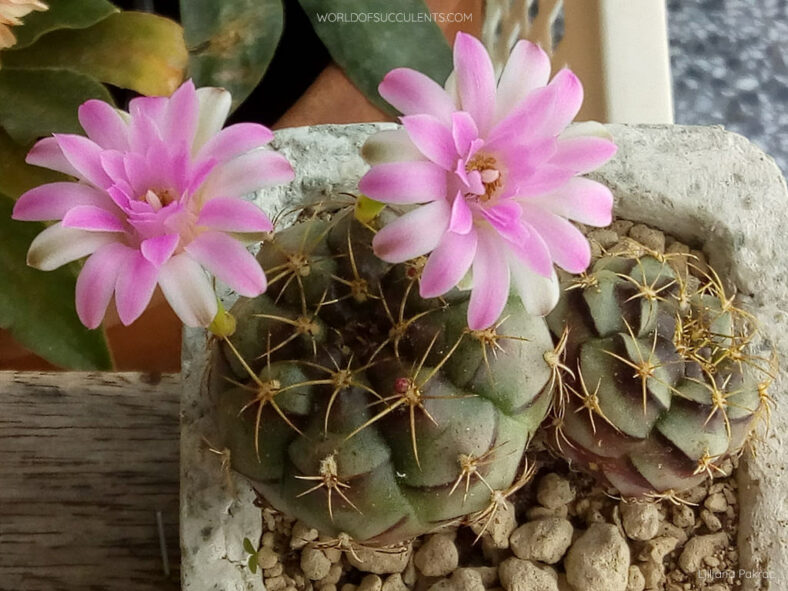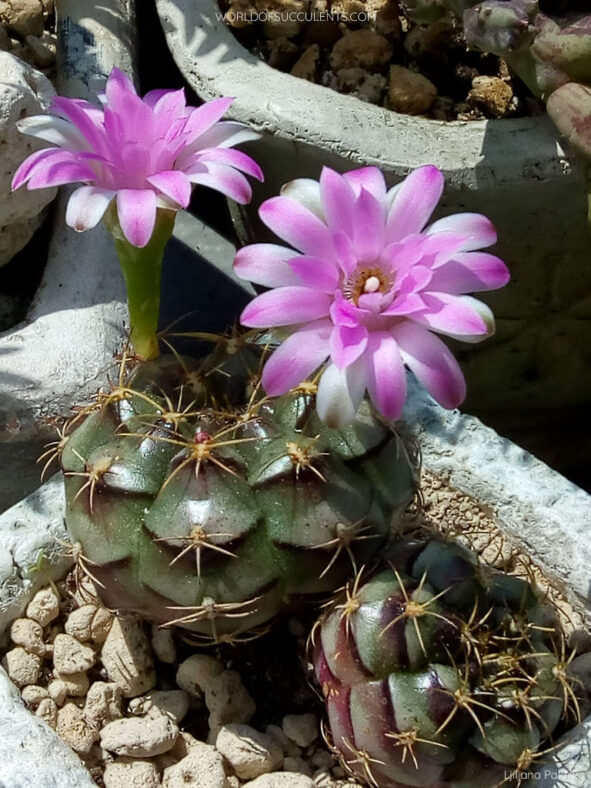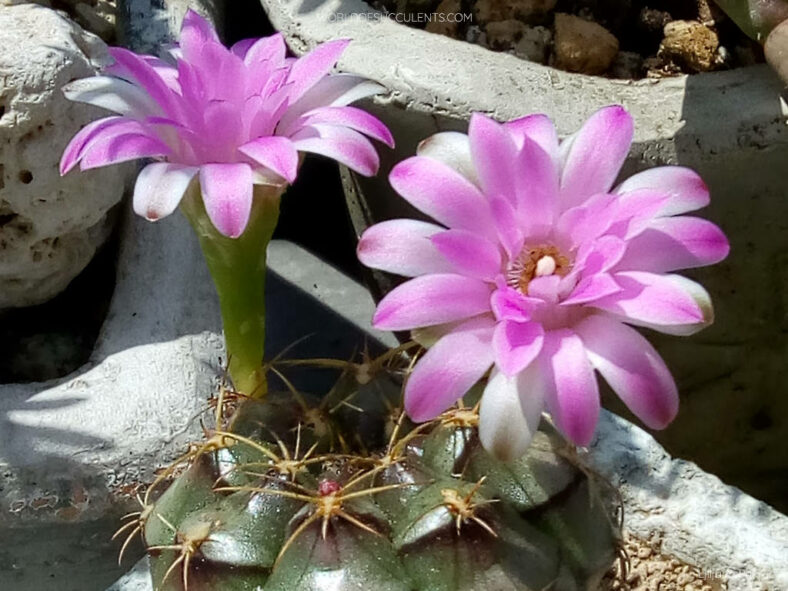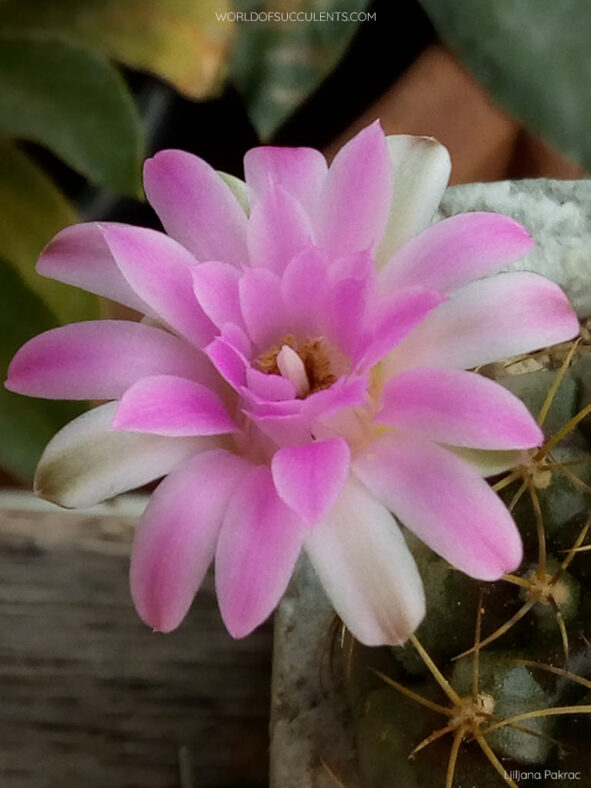Gymnocalycium anisitsii var. tucavocense is not recognized as a separate variety and is listed as a synonym of Gymnocalycium anisitsii.
Scientific Name
Gymnocalycium anisitsii var. tucavocense Backeb. ex H.Till & Amerh.
Accepted Scientific Name
Gymnocalycium anisitsii (K.Schum.) Britton & Rose
Synonym(s)
Gymnocalycium anisitsii subsp. tucavocense
Scientific Classification
Family: Cactaceae
Subfamily: Cactoideae
Tribe: Trichocereeae
Genus: Gymnocalycium
Etymology
The varietal epithet "tucavocense (pronounced too-kuh-voh-KEN-see)" refers to the Tucavaca Valley, the native habitat of this plant.
Origin
Gymnocalycium anisitsii var. tucavocense is native to Bolivia. It grows in open areas with the protection of low bushes in the Tucavaca Valley and adjacent areas in the Santa Cruz department.
Description
Gymnocalycium anisitsii var. tucavocense is a small cactus with flattened spherical stems with 8 to 11 notched ribs and fuzzy areoles with clusters of stiff, pale yellow to brownish spines. The stems can grow solitary or slowly offsetting, reaching up to 4 inches (10 cm) in height and 6 inches (15 cm) in diameter. Each areole bears 5 to 7 radial spines measuring up to 2.4 inches (6 cm) long.
During the summer, Gymnocalycium anisitsii var. tucavocense produces beautiful lavender to pink flowers from the areoles at the top of the stems. It blooms quite profusely, even when young. The flowers are funnel-shaped and can measure up to 2.4 inches (6 cm) long. The red fruits are cylindrical and can grow up to 1 inch (2.5 cm) long and 0.4 inch (1 cm) in diameter.

How to Grow and Care for Gymnocalycium anisitsii var. tucavocense
Light: During the hottest months, this cactus needs some protection from direct sunlight. However, excessive shading will result in the loss of flowers.
Soil: Having soil with good drainage is most important for a healthy Gymnocalycium anisitsii var. tucavocense. You can use commercial soil for cacti or make your own mix.
Temperature: This cactus can tolerate high temperatures but is not a cold-hardy plant. So, if there is a risk of freezing temperatures, bring it indoors. It grows best in USDA Plant Hardiness Zones 9b to 11b, with average minimum winter temperatures ranging from 25 to 50 °F (-3.9 to 10 °C).
Watering: During the growing season, water Gymnocalycium anisitsii var. tucavocense frequently, but allow the soil to completely dry out before watering again. In the winter, when it goes dormant, cut back on watering.
Fertilizing: While it does not need much fertilizing, giving it some extra nutrients occasionally keeps the plant healthy and prolongs the time for repotting. During the winter, there is no need to fertilize, as the plant is not actively growing.
Repotting: Repot it every two years into a pot that is the same size or slightly larger. The best time for repotting is in late winter or early spring.
Propagation: There are two simple methods to propagate Gymnocalycium anisitsii var. tucavocense: from seeds or by dividing offsets. The best time for removing offsets is during spring and summer when the plant is actively growing, while late spring and early summer are ideal for sowing seeds.
Learn more at How to Grow and Care for Gymnocalycium.
Toxicity of Gymnocalycium anisitsii var. tucavocense
Gymnocalycium anisitsii var. tucavocense has no toxic effects reported. However, keep it away from pets and children as it has sharp spines.
Links
- Back to genus Gymnocalycium
- Succupedia: Browse succulents by Scientific Name, Common Name, Genus, Family, USDA Hardiness Zone, Origin, or cacti by Genus
Photo Gallery
Click on a photo to see a larger version.


